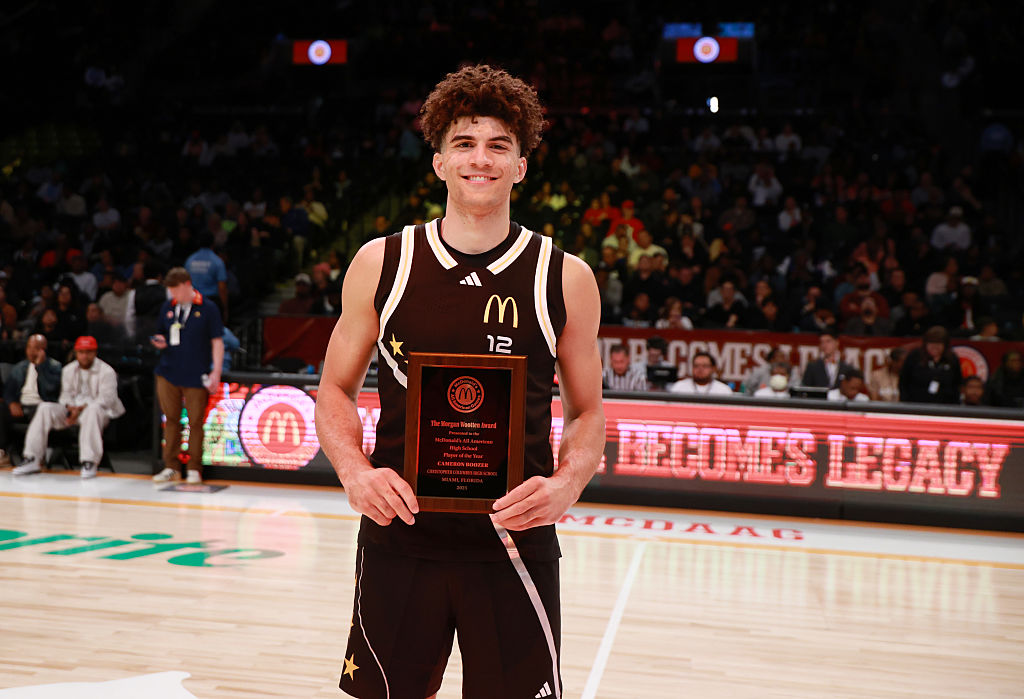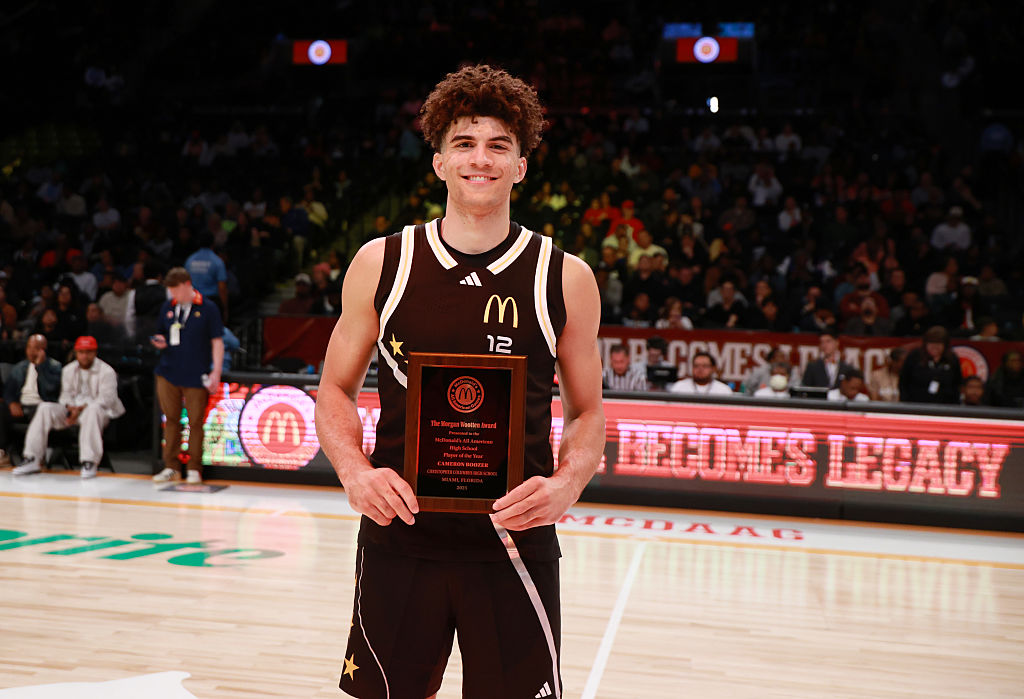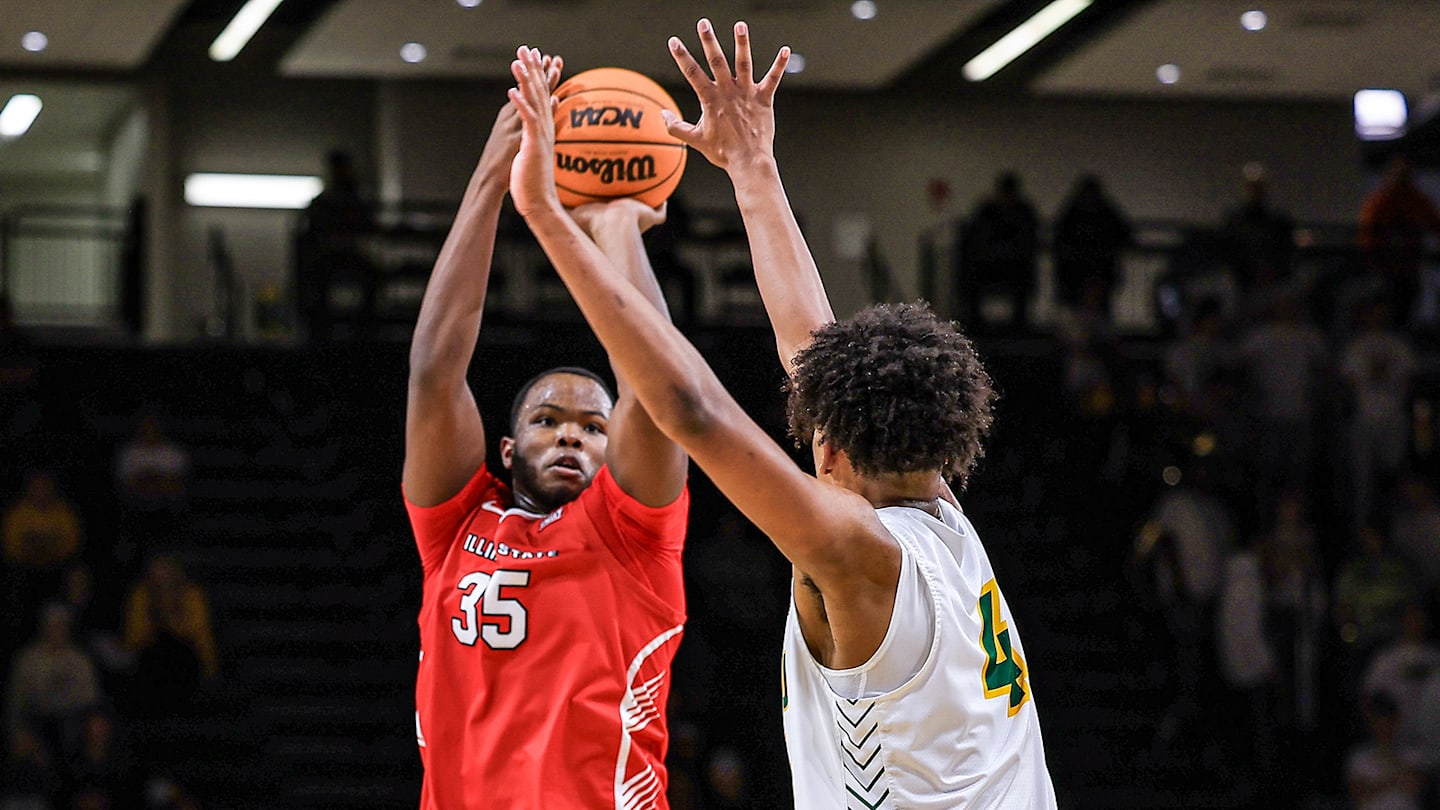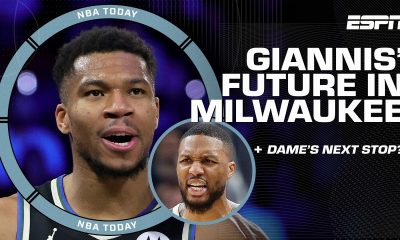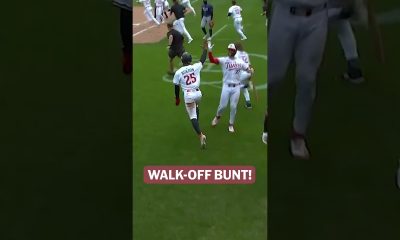Last week, President Donald Trump signed an executive order targeting what the White House called the “chaotic environment” around lucrative financial deals available to some college athletes, particularly in high-revenue sports like football and basketball.
The order would limit some “third-party, pay-to-play payments,” the kind of deals that resulted in what former Alabama coach Nick Saban has called an “arms race” between colleges to woo top teenage prospects. The order does not limit the brand endorsements or licensing deals that can also come to these players.
The impact of the order remains to be seen. Still, it is the latest shift in an evolving landscape for student athletes navigating potentially lucrative financial benefits during their college careers.
An NCAA rule change in 2021 allowed college athletes to monetize their name, image and likeness (NIL) and profit from endorsements, subscriptions and licensing deals. Then, last month, a federal judge signed off on a $2.8 billion settlement of a lawsuit that, among other changes, allows schools to pay student athletes directly in addition to traditional tuition scholarships, including a share of revenue earned by the schools’ athletic departments (those changes went into effect July 1).
Related:Carson Group Claims Former CMO “Manufactured Evidence” For Lawsuit
Given how much money some power conferences make off their sports programs, many argue it’s only fair to let the athletes themselves benefit financially. For example, a December 2024 CNBC analysis of major universities found Ohio State University’s athletic department led the way with a $1.32 billion valuation and $280 million in revenue.
According to William Carter, a top NIL consultant and professor at the University of Vermont’s Grossman School of Business, 20% of Division I athletes have signed NIL deals, out of an estimated 190,000 student-athletes. And according to the On3 NIL Valuation, an index projecting the annual value for college and high school athletes, at least 50 (and likely more) athletes are running profits (including NIL earnings) above $1.5 million.
Of course, for every Arch Manning, DJ Lagway and Carson Beck making millions of dollars, thousands more D-I athletes across all sports are getting paid much lower figures, with some in less-popular sports like fencing, rowing and bowling making $1,000 or less, The New York Times has reported.
Yet financial advisors (including some former pro athletes) warn that many young athletes and their families are ill-prepared for the potential windfall and susceptible to the bad financial advice, shady business offers and sometimes outright financial fraud that often chases new money.
Related:HarbourVest Hires BlackRock Executive to Lead Wealth Business
Consider recent cases in the professional leagues. Baseball star Shohei Ohtani relied on his long-time interpreter and practice partner to handle some financial affairs, only to see him fraudulently tap the player’s bank accounts to pay off gambling debts. NBA player Dwight Howard was lured into a bogus investment opportunity to buy a women’s NBA team, losing millions.
Yet most professional leagues or player organizations have protective measures to help pros manage their money, including financial management classes, education programs and even vetted lists of financial advisors.
College athletes are far less prepared, says Jon Hayes, a managing director and senior wealth advisor with MAI Capital Management, a Cleveland-based financial advisory firm with a long track record of working with professional athletes.
“They haven’t finished college yet. They haven’t sat in union seminars that talk about red flags to look out for and things to be aware of,” Hayes said. “They haven’t been in a pro locker room to have that veteran player say to them, ‘Hey, there’s this local guy that’s going to be waiting after every game and he’s going to try to get close to you and sell you on something.’”
Related:Deals & Moves: AmeriFlex Adds $280M California Team From Osaic
Hayes and other advisors worry that the combination of big money and young, often financially unsophisticated athletes, little institutional oversight and colleges wary of liability risk has created an environment that could cost aspiring pro players millions.
Some advisors even avoid working with these student athletes altogether. They are frustrated by navigating inexperienced clients through the dangers brewing in the space, says Mitch Smith, the president of life, high-net-worth, and executive benefits with EPIC Insurance Brokers & Consultants.
“It’s tough for them and for the professionals. It’s a beat-you-up kind of industry,” Smith said.
Fraud Follows New Money
Though top college athletes have long been popular, before 2021, there were strict NCAA guidelines on the players’ ability to monetize their NIL in endorsement deals or testimonials.
The NCAA considered changes after several states enacted their own NIL rules. In June 2021, the Supreme Court ruled in NCAA v. Alston that the NCAA’s financial restrictions on student-athletes’ “education-related benefits” violated antitrust law.
The following month, the NCAA suspended its ban on NIL deals. Whereas once athletes could only receive scholarships, housing and an education in return for their skills, now they can sign sponsorships and rake in funds raised by boosters. NIL tech company Opendorse projected the total NIL market to grow to $1.67 billion in 2024-2025 (from $917 million in 2021-2022).
But scams, fraud and bad advice often follow new money, and lawsuits are usually close behind.
Last month, Sports Illustrated reported that a lawsuit brought by former college quarterback Jaden Rashada against Florida Gators Head Coach Billy Napier, former staffer Marcus Castro-Walker, and wealthy Florida booster Hugh Hathcock could proceed.
According to Rashada, the defendants misled him with a promised $13.85 million NIL deal that led him to choose Florida instead of a less lucrative recruiting deal with the University of Miami Hurricanes. The multi-million dollar deal never came to pass, but Rashada had already dropped his Miami commitment.
Last year, Front Office Sports reported that several football players at the University of Tulsa accused the school’s coaches of promising their families tens of thousands of dollars in NIL payments, but they never received anything.
An NIL company co-founded by former NBA Star Kendrick Perkins was accused of preying on young athletes by offering upfront cash in exchange for portions of their future NIL deals, an agreement experts said was akin to a high-interest loan, according to an ESPN investigation.
The NIL opportunities (and risks) extend to the high school level, as football player T.A. Cunningham can attest. According to NBC News, Cunningham’s family moved to California and enrolled him in a high school there with the promise of a big payday when he entered college. But the NIL deals never came, and Cunningham wound up benched on his high school team.
A Need for Advice
Often, college athletes are the first in their family to accrue money so quickly and lack trusted advisors to steer them through the decision-making minefields. Smith said he has seen college athletes presented with phony endorsement deals or saddled with fraudulent contracts that are difficult to break.
Jerry Sneed, a senior vice president and senior private wealth advisor with Procyon Partners, said the NIL reforms opened avenues for advisors to find potential clients. Some college football players make more as college athletes than they will as NFL rookies.
Sneed is a registered advisor with the NFL Players’ Association, the labor union representing the league’s athletes. He said college athletes are “overly protected” in college and have the desire to “be a brand, in a sense,” and that can make them vulnerable to too-good-to-be-true financial proposals.
“It’d be perfect if they just stayed on campus, and anytime someone reached out to them, they went to their advisor. But these guys are all social media people,” he said. “You think it’s a good deal because you don’t know any better. That’s all it takes to lose a hundred grand or a million bucks.”
Most advisors say that professional sports leagues and players’ unions are more adept at educating young pro players about financial management and the risk of fraud (though as the Ohtani and Howard examples show, even the most celebrated players can become victims).
College athletes don’t have a union, and both their schools and the NCAA seem hesitant to take on that kind of responsibility because they fear liability exposure, according to Smith.
“Everyone’s afraid to jump in, but I feel like the liability of not doing it is way worse,” he said.
Hayes recalled speaking with a university provost about whether NIL athletes were prepared for the financial complications and potential fraud that follow their deals. The provost agreed more could be done, but questioned why the school would single out athletes for those initiatives when pre-med and pre-law students were also following potentially lucrative career paths.
That reasoning made no sense to Hayes. “The average career span in the NFL is three-and-a-half years,” he said. “The doctor or lawyer may go out and invest in something stupid and lose their money at age 28, but can work for another 30 or 40 years and recover. The pro athlete can’t.”
Smith said some schools will commit to a single financial training session for athletes, while others will try to align themselves with particular advisors, which gets “messy.” Smith said the NCAA needs to adopt some standardization around protecting the athletes’ financial interests through establishing a players’ union or group.
“These schools and the NCAA make a lot of money for them. To take a few percent across the board, to fund a program like that, and get a group of really good advisors” would benefit the players and the schools, he said.
According to Hayes, colleges have historically protected their athletes to the point of being “resistant” to running financial seminars or education forums for their college players, opting to shelter their athletes and keep fraudsters away.
“And the unfortunate consequence is by doing that, you’re not educating them,” he said. “You’re exposing them.”
Payments Beyond NIL Deals
Last August, the NCAA and a company called Teamworks launched NIL Assist, which helps student athletes weigh their NIL options. According to an NCAA spokesperson, the platform stems from transparency and disclosure rules the administration’s Division I Council approved last year to offer students more information about “the overall NIL landscape and trends in NIL agreements.”
In addition to a service provider registry and some educational materials, the platform includes a public-facing database with anonymized “NIL disclosure data” where college athletes can rate their experiences with registered individuals or services.
Further complicating issues, NCAA members approved changes to their rules to align with an agreement to settle an ongoing lawsuit arguing college athletes from before the 2021 changes are owed some compensation, according to Front Office Sports. Plaintiffs in the suit argued that broadcast revenue earned by the NCAA should be considered NIL revenue and shared with the athletes.
Former student athletes Grant House and Sedona Prince originally filed the suit in 2020, seeking damages and an injunction to stop the NCAA from enforcing anticompetitive restraints that stopped student players from getting NIL payments, according to a notice from the law firm Ropes & Gray. The suit became a class action in 2023.
The judge ordered the NCAA to pay almost $28 billion in damages over the next decade to former college athletes who played from 2016 up until the 2021 NIL changes, according to ESPN.
The settlement deal also means schools can pay their athletes directly, compensation above and beyond what they may earn from NIL deals. Schools start with a $20.5 million cap, which will increase yearly for the coming decade, not including scholarships.
The changes also try to limit college sports boosters—often alumni with both school pride and deep pockets—from paying favored athletes “de facto salaries” by funneling NIL money through third-party deals, ESPN reported.
Winston Justice, the CEO of $7 billion SageSpring Private Wealth and a nine-year NFL offensive lineman, said college players may be less susceptible to fraud than professionals. He said professionals are more emboldened to aggressively chase lucrative deals than students, who are more cautious.
Schools could also mandate that college athletes attend classes on financial management or avail themselves of other educational resources. “Whereas in the pro leagues, I guess you can, but not really,” he said. “It’s kind of up to them if they go to the NFLPA trainings or if they go take advantage of the educational assistance.”
Justice’s leading fear for NIL athletes isn’t fraud but taxes. He said that too many are not allocating money for future tax liabilities that could hit after they leave the programs. Sooner or later, he says, NIL money will stop.
“Then you can make the NFL or NBA, and those funds could pay for the taxes, but what if you don’t make it?” he asked. “Or what if you go to Canada and they don’t pay you as much?”
What Comes Next?
The Wall Street Journal first reported that Trump was moved to sign an executive order related to college sports after a conversation with former Alabama football coach Nick Saban in early May. Saban was allegedly concerned about schools entering a financial “arms race” to lure athletes, and the damage it would cause college sports programs.
In a fact sheet detailing last week’s order, the White House claimed the Supreme Court ruling helped create a situation “that threatens the financial and structural viability of college athletics,” including lawsuits seeking to “tear down” the differences between college and pro sports.
According to the White House, the situation has turned what was “supposed to be legitimate, third-party NIL opportunities for players into pay-for-play bidding wars amongst university boosters,” with single teams spending as much as $40 million in one year.
“This dynamic also reduces competition and parity by creating an oligarchy of teams that can buy the best players—including the best players from less-wealthy programs at the end of each season, given the lack of restrictions on transferring teams each year,” the fact sheet read. “Without federal action to restore order, ongoing lawsuits and a patchwork of state NIL laws risk exploiting student-athletes and eroding the opportunities provided by collegiate sports.”
The order is vague on enforcement details; in it, Trump asks the Labor Secretary and National Labor Relations Board to “clarify” student-athletes’ status to “preserve non-revenue sports,” and directs the Attorney General and Federal Trade Commission to “take appropriate actions” to protect their rights and protect college athletics “from endless, debilitating antitrust and other legal actions.”
Regardless of how the order plays out in colleges and courtrooms in the months and years to come, the need for sound financial advice has only intensified for these young student-athletes, says Shawn Wooden, a financial advisor with Associated Financial Consultants and Investor Services and a former safety for the Miami Dolphins and Chicago Bears. After all, the schemes don’t change, even if the potential victims do, he said.
“It’s just using different keywords. It’s still the same,” Wooden said. “Fraud is still the same. A Ponzi scheme is a Ponzi scheme.”






